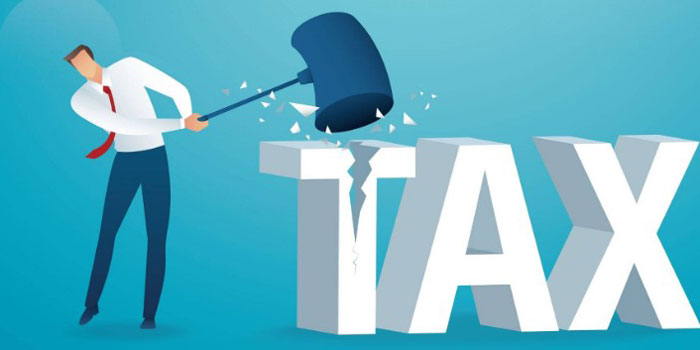What Is Alternative and Non-Traditional Data? A Detailed Guide
Oct 12, 2024 By Georgia Vincent
In today's data-driven world, companies, analysts, and investors are continually looking for ways to gain a competitive advantage. Traditionally, businesses have relied on conventional data sources such as financial statements, market research, and economic reports to make informed decisions. However, with the rise of technology and new data collection methods, alternative and non-traditional data sources have become increasingly important. This shift allows businesses to make more nuanced and predictive decisions by tapping into unstructured and unconventional data sets.
What is Alternative Data?
Alternative data refers to non-traditional sources of information that companies, especially in finance and investment, use to gain deeper insights into trends, behaviors, and market dynamics. Unlike traditional data (such as company filings, earnings reports, or economic indicators), alternative data comes from diverse, unconventional sources, often outside standard business data environments. This can include anything from satellite imagery and social media trends to web scraping and transaction data.
Examples of Alternative Data Sources
Alternative data sources offer unique insights that traditional data cannot provide. These sources are diverse, ranging from digital footprints to environmental observations.
1. Social Media Data
Platforms like Twitter, Facebook, LinkedIn, and Instagram generate massive amounts of data. Companies can analyze trends, consumer sentiment, and brand engagement by using sophisticated algorithms to monitor keywords, hashtags, and user behavior.
2. Web Scraping Data
Companies scrape websites to collect public information, such as product prices, customer reviews, or inventory levels. This data provides real-time insights into market dynamics, competitive landscape, and consumer preferences.
3. Satellite Imagery
Using satellite images, businesses can monitor everything from crop health and land usage to traffic patterns around shopping malls. Investors, for example, may use this data to gauge retail foot traffic, predicting company performance before official reports are released.
4. Transaction Data
Credit card transactions and payment processing data are valuable indicators of consumer behavior. By analyzing this data, businesses can detect patterns in spending, offering insights into economic health or industry trends.
5. Mobile Data
Mobile phones collect a wide range of data, including location information, browsing habits, and app usage. Companies use this data to track consumer movements, retail visits, or app engagement trends.
6. Public Records and Government Data
While some public records are considered traditional, others, such as environmental data, weather patterns, or regulatory filings, can provide alternative insights. For instance, tracking building permits can give investors early signals of economic activity in a region.
Why is Alternative Data Important?
Alternative data is crucial because it provides new perspectives and deeper insights that traditional data sources may miss. By leveraging these non-traditional datasets, companies can gain a competitive edge through more accurate forecasting and strategic decision-making.
1. Provides Unique Insights
Traditional data sources provide limited perspectives. For instance, a companys quarterly report may offer financial figures, but alternative data can give real-time insights into consumer sentiment, supply chain issues, or competitive pressure. By combining both traditional and non-traditional data, companies can gain a 360-degree view of the business environment.
2. Enhances Predictive Accuracy
Because alternative data often captures real-time or near-real-time information, it allows businesses to make more accurate predictions about future trends. For example, satellite images showing empty parking lots at a retail chain could help investors anticipate lower-than-expected earnings.
3. Competitive Edge
Companies that effectively leverage alternative data have a competitive advantage. They can identify trends earlier, adapt more quickly to market changes, and make smarter, data-driven decisions.
4. Helps in Risk Management
Alternative data can be a powerful tool in managing risk. For instance, monitoring environmental data can help insurance companies assess risks related to natural disasters, while analyzing social media can provide early warnings about potential reputational damage.
What is Non-Traditional Data?
Non-traditional data typically refers to data sources that are not regularly used in the mainstream or legacy systems of a company or industry. While alternative data is often described as novel or unorthodox, non-traditional data expands to cover any data that does not fit within the historical business models of a company. This can be from sources that are newer, such as machine-generated data, or just underutilized forms of data that businesses may not have considered initially.
Characteristics of Non-Traditional Data
Non-traditional data is characterized by its diversity and unconventional origins, distinguishing it from standard data sources commonly used by businesses. These data sets often come in varied formats and require innovative approaches for collection and analysis.
1. Unstructured Data
Non-traditional data is often unstructured, meaning it doesn't fit into neat rows and columns like traditional databases. This includes text data (emails, documents), images, video, or even audio files. Analyzing unstructured data requires advanced techniques like machine learning and natural language processing (NLP).
2. High Volume and Velocity
With the rise of IoT devices, smartphones, and social media, non-traditional data often comes in high volume and at a rapid pace. Businesses must adapt their data processing systems to handle this flow efficiently.
3. Data Variety
Non-traditional data includes a wider variety of information sources than traditional data. This variety can come in many forms, from geographic data to consumer-generated content. Each type of data offers unique insights but requires specific tools for collection, processing, and analysis.
Key Sources of Non-Traditional Data
Non-traditional data sources comprise an array of information channels not typically employed in standard business models. These sources provide an edge by delivering unconventional insights through diverse data types.
1. Machine-Generated Data
Machine-generated data includes data collected from sensors, connected devices, and other hardware systems. This can include smart meters, industrial equipment, or any other device that records data automatically. Businesses use this data for real-time monitoring, predictive maintenance, and improving operational efficiency.
2. Geolocation Data
GPS and other geolocation tools generate data about where consumers or goods are located at any given time. For example, logistics companies can optimize their delivery routes by analyzing geolocation data from their fleet of vehicles.
3. User-Generated Content
Content created by users, such as reviews, social media posts, or blog articles, is a valuable source of non-traditional data. It helps businesses understand customer experiences, product feedback, and market sentiment in ways that standard surveys might miss.
4. Sensor Data
In industries such as manufacturing, agriculture, and logistics, sensor data plays a crucial role. For example, farmers use sensors to monitor soil conditions, while manufacturers track equipment performance to prevent breakdowns.
How to Leverage Alternative and Non-Traditional Data?
To make the most of alternative and non-traditional data, businesses need the right tools, strategies, and expertise. Below are some steps companies can take:
1. Identify Relevant Data Sources
Not all alternative or non-traditional data sources will be relevant to every business. Companies should first assess their objectives and challenges before identifying which data sets can provide valuable insights.
2. Invest in Technology
Since much of this data is unstructured and large in volume, traditional databases and data processing methods may not suffice. Companies need to invest in modern technologies such as cloud storage, data lakes, and advanced analytics platforms to process and analyze alternative data effectively.
3. Develop Analytical Skills
Understanding how to analyze and interpret alternative data requires specialized skills. Data scientists, analysts, and AI experts are essential in making sense of the data and turning it into actionable insights.
4. Ensure Data Privacy and Compliance
With the use of alternative data comes the responsibility of ensuring it is collected and used ethically. Companies must adhere to data privacy regulations like GDPR or CCPA, particularly when using personal data.
5. Combine with Traditional Data
While alternative and non-traditional data are powerful, they are most effective when combined with traditional data sources. This blended approach provides more comprehensive insights, improving both predictive accuracy and decision-making processes.
Conclusion
Alternative and non-traditional data have revolutionized how businesses approach decision-making, risk management, and market analysis. By tapping into new data sources, businesses can gain real-time, actionable insights that were previously inaccessible. Although navigating this complex landscape requires the right tools and expertise, the benefits of utilizing alternative and non-traditional data are undeniable. As the world becomes increasingly connected, businesses that embrace this data revolution will be better positioned to succeed in a competitive marketplace.

The role of information and communication in financial intermediation

Techniques for High-Income Tax Payers to Save Money

Hidden Cost to Buying a Home

How Your Credit Cards Can Help During a Recession

How Much Do Taxes Cost Small Businesses?

Credit Cards Annual Fee

An In-Depth Look at Lex Levinrad's Strategies: 2024 Review

The 4 Most Effective Apps For Saving Cash In 2022

Understanding Trial Balance: Definition, Function, and Importance

